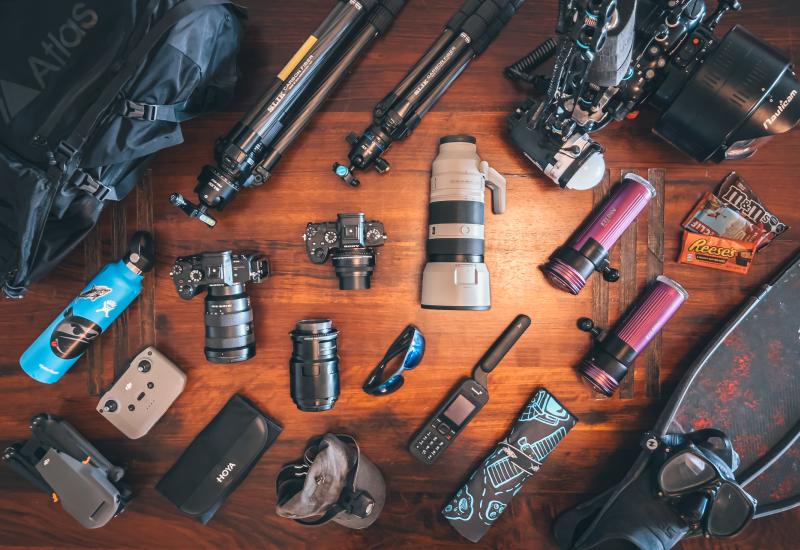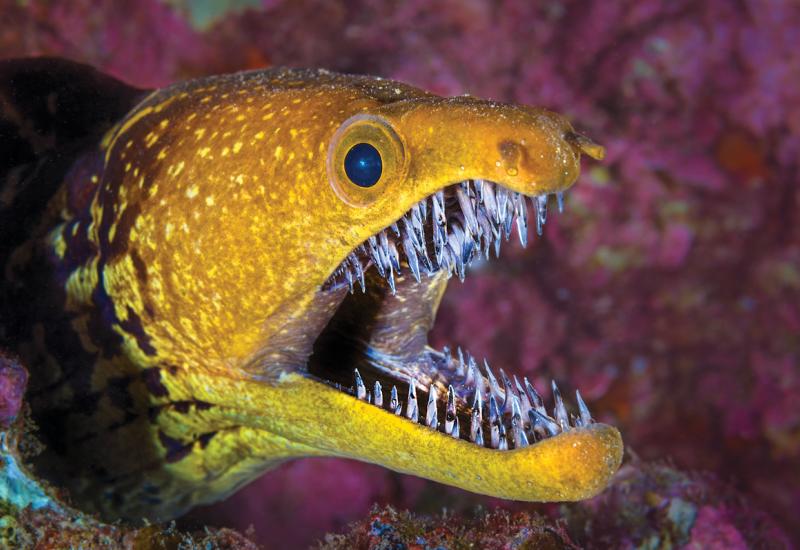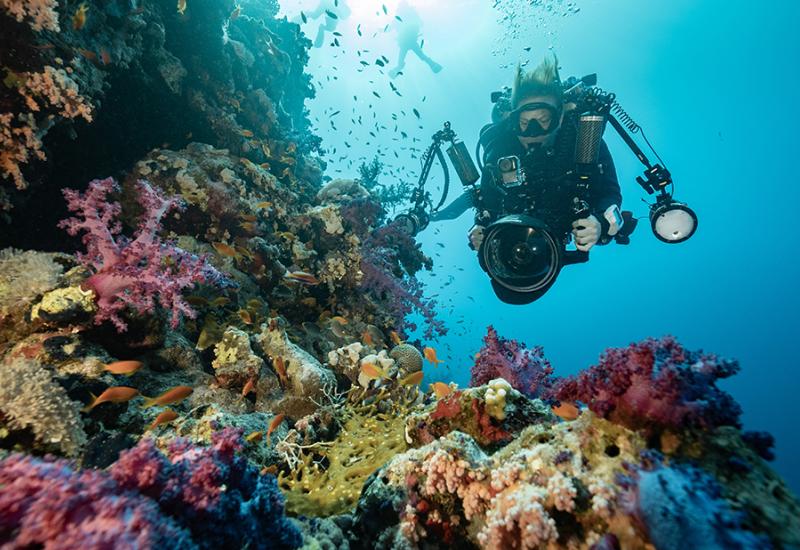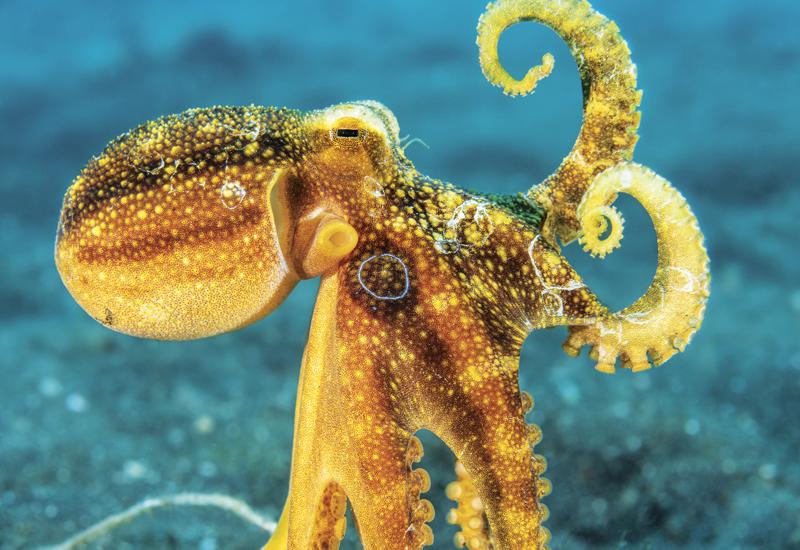Slug Spotter: A Guide to Photographing Nudibranchs

Alex MustardGEAR: Nikon D800 with 105mm lens
SETTINGS: f/25; 1/320; ISO 100
Before you can photograph nudibranchs, you have to find them, and I’ve good news and bad news. The good is that they are widespread; found from the poles to the tropics, they often transform otherwise unappetizing local diving into major photographic shoots. The bad news is that they are not evenly spaced—dive in the wrong places, and you can go hundreds of dives without seeing one. Explore the correct micro habitat, and you can sometimes find hundreds on a dive.
The easiest way to see slugs is to dive with an eagle-eyed nudi hunter, often a local expert. Many Asian dive operations employ spotters, who can turn up slugs faster than you can photograph them. But this is also a diving skill you can develop, especially by learning from other nudi lovers and looking at species-identification books. It is partly about knowing where to look, partly about training your eyes to spot signs and partly about diving slow. Bigger slugs are easier to shoot and will fill the frame more.
Related Reading: Is This The World's Wildest Nudibranch?
Nudibranchs are carnivores, and they feed mainly on nonmoving invertebrate animals, such as sponges, hydroids, tunicates and more. Each species has a very specific diet, which is one reason there are so many types. The trick to finding the slugs is to dive in places where their prey proliferates. From my observations, few nudis feed on hard corals, so pure coral reefs support less of them. Instead, tropical slugs are most common in mixed environments that are exposed to nutrient-rich currents. My favorite warmwater nudibranch destination I have visited is Anilao, in the Philippines, although plenty of other places across Southeast Asia push it close. I prefer shooting slugs in cold water since they are often even more numerous. For example, I’ve found the fjords of Norway are incredible at the end of winter, with more nudibranchs than you can count on some dives, although the diversity is lower. I find cold-water slugs more exciting because there are fewer people shooting them, and without dive guides, you see far fewer shots using lighting techniques like snoots.
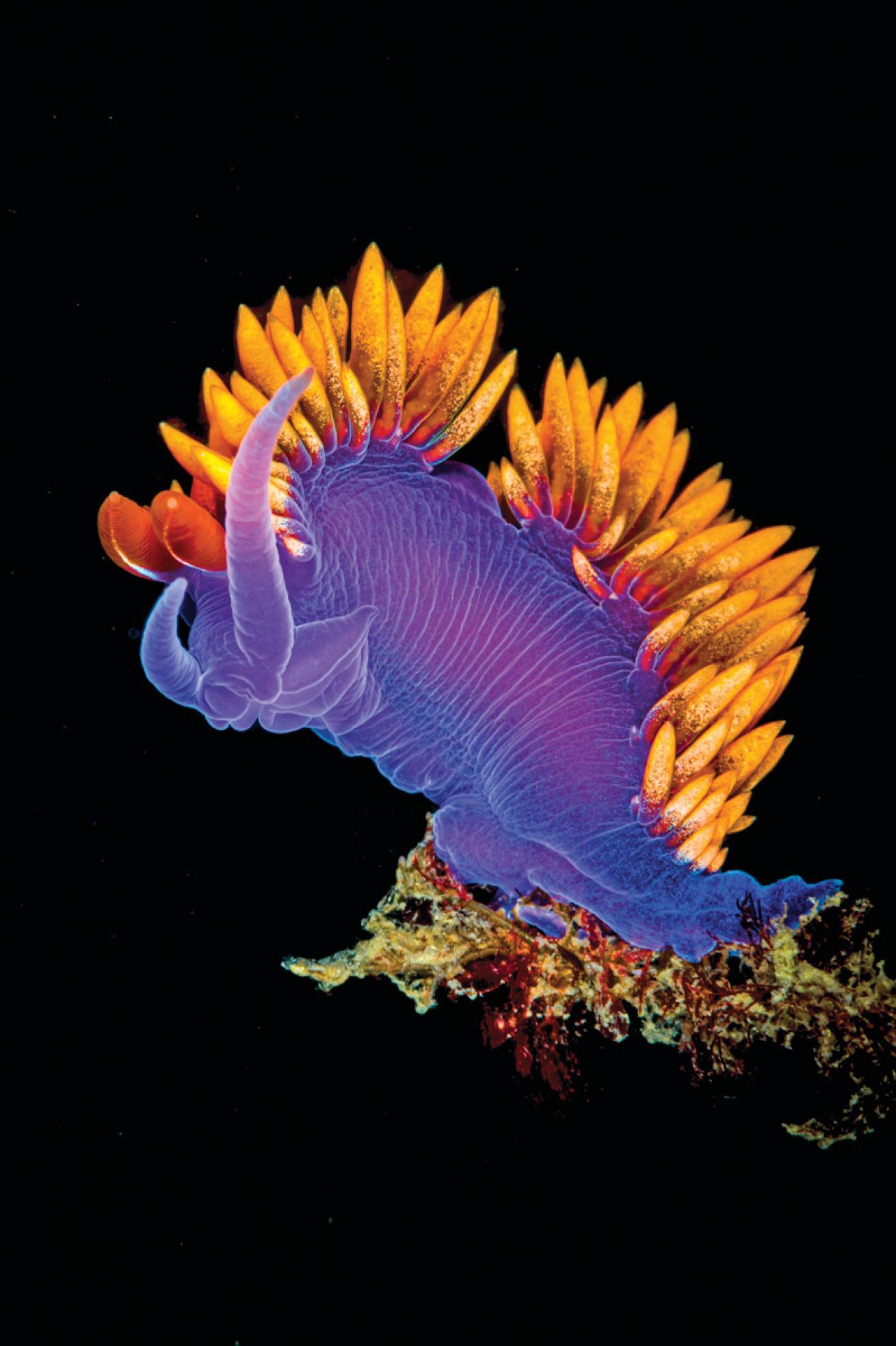
Alex MustardGEAR: Nikon D4 with 105mm lens and Retra LSD snoot
SETTINGS: f/36; 1/250; ISO 200
Nudis are small subjects, demanding macro or supermacro setups. Many of the most photogenic nudis are slightly too small for a straight macro lens and usually require a weak additional closeup lens to really fill the frame. There is a mistaken belief among supermacro photographers that stronger must always be better when it comes to accessory lenses. But slugs teach us that often a weaker accessory is more useful.
Macro lenses already focus down to a 1:1 magnification, so they only need a little help. Sadly, there is no standout weak supermacro accessory on the market to recommend. Some dedicated nudibranch photographers use a small extension tube (such as 12mm), while others use a weak supplementary lens inside the housing (like the Nikon 5T that can be attached to many lenses) to allow their macro lens to focus closer.
Both will stop your macro lens from focusing on distant subjects, but this is unlikely to be a limitation on these dives. The advantage is that you can still use that stronger supermacro accessory, like the exemplary Nauticam SMC-1, when needed. That said, don’t immediately reach for all those expensive accessories, because finding the right nudibranch is one of the key steps to success.
Related Reading: Photographing Blennies With Personality
Behind The Shot
1. Nudibranchs come in many colors and shapes, but I usually choose which to shoot based on where I find them. I like the shape of the kelp in this image, and the fact I could isolate the nudi against open water for the black background. Nudis often look eye-catching when photographed from directly ahead with their rhinophores (the chemosensory protrusions on their heads) in crisp focus. This species is often found on kelp on both the West and East coasts of North America, as well as the European coast in the Atlantic. I photographed this one in Norway.
2. Nudis live on the seabed, which means it can be challenging to isolate them compositionally. Snoot lighting suits slugs because it puts them in the spotlight. Many shots are taken like this of tropical slugs, where dive guides can help aim snoots, but in cooler waters, where there is no helping hand, such shots are more special. This picture was taken coastal diving in California. The visibility wasn’t great, and the seabed was not especially attractive, but that didn’t matter. The Spanish shawl is a stunning nudibranch, and illuminated with the snoot, its colors stand out brilliantly.
Where to See Them
Nudibranchs are widespread, but for me, they are most impressive when they are at their biggest and most colorful. And like many marine species, this is something that happens in the cool, rich waters of the Pacific Northwest. Vancouver Island is a fantastic destination with lots of different diving areas. The large tide and rich waters feed the life, which includes plenty of nudibranchs and many large species. If I had to pick a favorite, it would be the orange peel nudibranch; it is brightly colored and grows to the size of a shoe. Vancouver International is the closest airport; divers can rent a car and take a vehicle ferry to the island.

